What do I Put on the Bottom of Raised Beds?
A question that new raised bed growers ask me often is “What do I put on the bottom of my raised beds?” Maybe you’re just starting your garden for the first time or maybe you’re adding more to your existing garden (I add one or two every year myself).
Either way, when you’re building a new bed, it’s important to consider whether you should line or fill the bottom of the beds — and if so, with what.
This question actually has two parts to it and we will address them both. The first is, what do you line the bottom of your raised bed with? The second is, what do you fill the bottom of your raised bed with? We covered all of the details of this in a recent Q&A podcast episode. You can listen to that here or continue reading.
What’s the purpose in lining raised beds?

I currently have 13 raised beds in my garden and 11 of those I lined with nothing. I simply built my raised beds and filled it up with soil. (Learn about raised bed soil mix options here.)
That’s not to say, though, that there aren’t benefits to taking that extra step and lining your raised beds. There are certainly several. But first, you have to ask yourself what your purpose is in wanting to line.
Lining Raised Beds to Prevent Weeds and Grass
Many gardeners line the bottom of their raised beds to cut back on weeds and grass. This lining serves as a barrier, preventing weeds and grass from growing up from the bottom. This is more of a benefit if you have a more shallow raised bed. If you’re bed is 6-10″ tall, you may want to consider lining for this purpose. With deeper beds, weeds and grasses aren’t as likely to reach the surface.
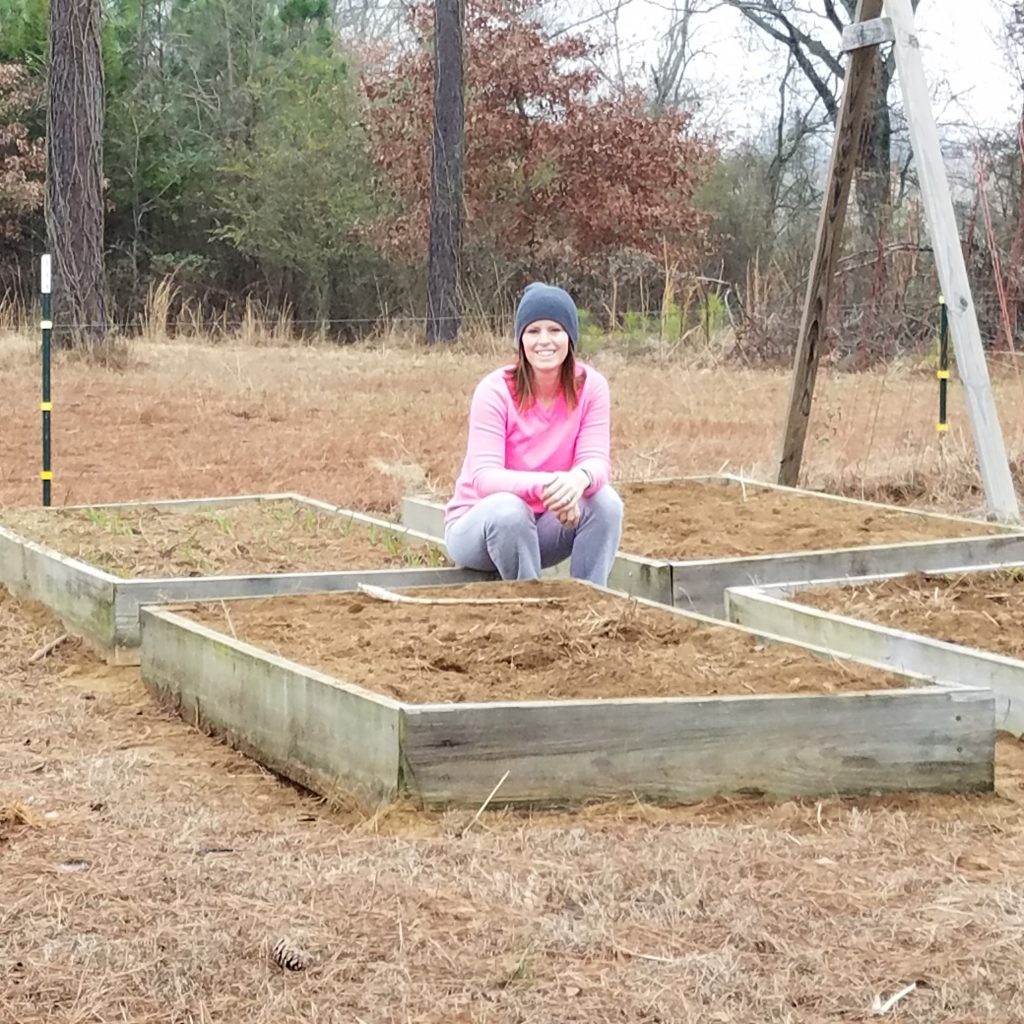
Lining Raised Beds to Prevent Burrowing Rodents
A second reason to line your bed is to prevent ground-dwelling rodents like moles, voles, and gophers from getting to your garden from underneath it. If this is the reason you’re wanting to line, then you would use a completely different liner than to cut back on weeds, which we’ll discuss below.
Lining Raised Beds to Prevent Soil Contamination
The third reason for lining your raised beds is that you want to keep a barrier between your raised bed and native soil that contains soil contaminants, such as lead. You’ll likely not know this until you do a soil test that specifically tests for contaminants.
Lining options for weed prevention
Cardboard
If you are lining your bed for the purpose of weed and grass barriers, one option is to lay cardboard in the bottom of your bed. Cardboard is great to smother the weeds and grass trying to pop up and it eventually breaks down right into your soil. Earthworms love it, and you’ll promote the health of the underlying soil while preventing weeds.

If you’re building a bed on bare soil, gravel or concrete, this really isn’t as necessary. If your new bed is built on weedy or grassy areas, it’s definitely a benefit to smother those things.
Landscape Fabric
Because cardboard breaks down over time, some people use landscape fabric to line their beds with. I’m not a fan of this method, as it restricts the growth of deep-rooted plants and doesn’t break down into the soil like cardboard does. There can never be a natural blending of added soil to the native soil, nor does it allow any earthworms into the raised bed soil, which we know are good for it.
But, landscape fabric does have its perks. It creates a solid barrier while allowing for drainage. And because it never breaks down, it might be more effective against particularly invasive grasses (although, I have seen Bermuda grass power through even landscape fabric).
Using landscape fabric to line shallow raised bed will generally limit you to growing shallow-rooted plants, and in most cases I don’t see deep raised beds needing it. That’s why it’s not my go-to choice.
Lining for rodent prevention
Wire mesh and hardware cloth
If you suspect or know you’ll have problems with ground-dwelling rodents, you may want to consider a hardware cloth or wire mesh. This will be stapled to the bottom of your bed after you build it. This is great at keeping the rodents out, but also allowing the beneficial earthworms in.
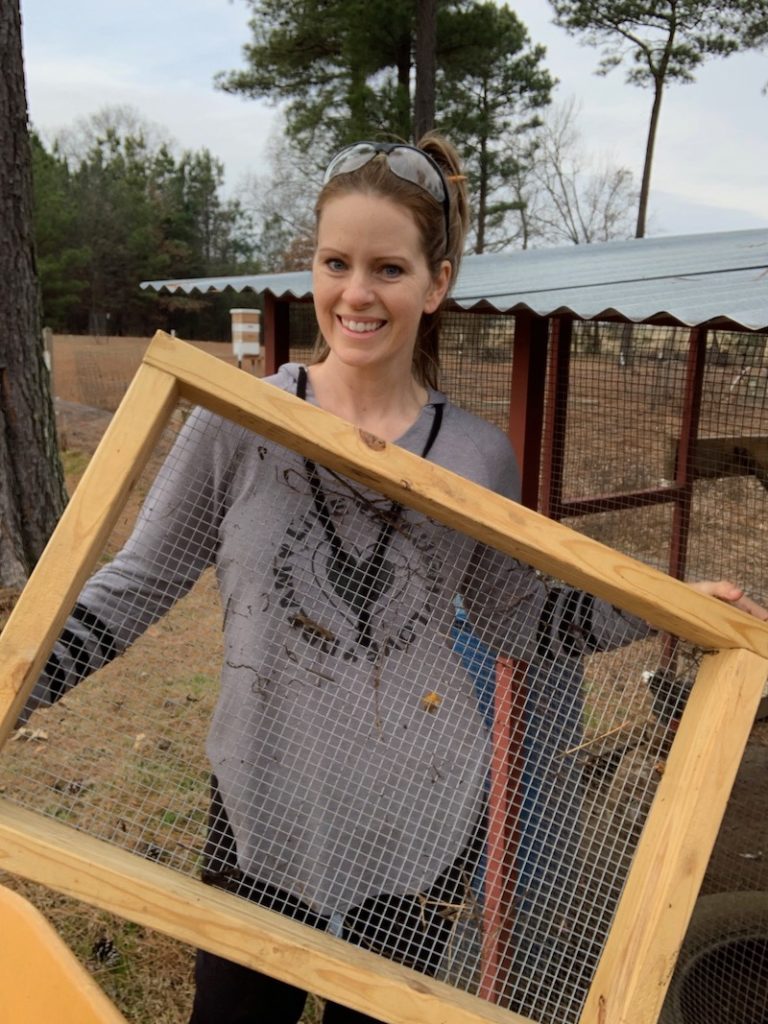
Lining for contaminated soil
Food grade plastic
You’ve tested your soil and it’s contaminated. You have a couple of options. First, you can build an elevated raised bed so that there’s zero contact with contaminated soil. Second, you can line your raised beds with food-grade plastic. You will most likely have to poke some holes on the bottom of this for drainage.
Because this plastic is heavy and, really, you’re completely closing it off, you’ll want to treat your raised beds as containers and add additional drainage methods to your bed and choose a lighter soil like a potting mix.
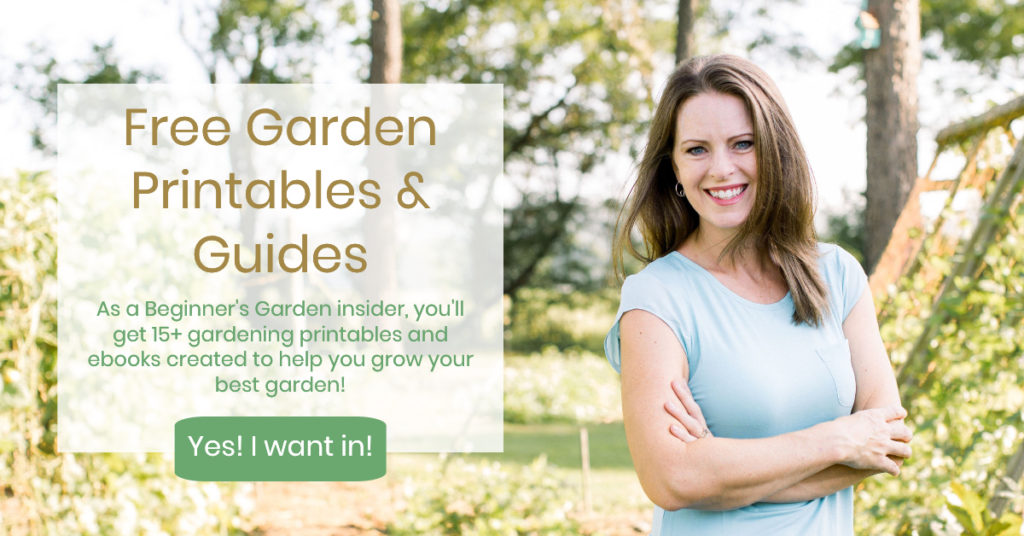
What do I fill the bottom of my raised bed with?
Thus far we’ve discussed lining options, and again, I’ll remind you that most of my beds aren’t lined. But filling the bottom of a new raised bed is a different question.
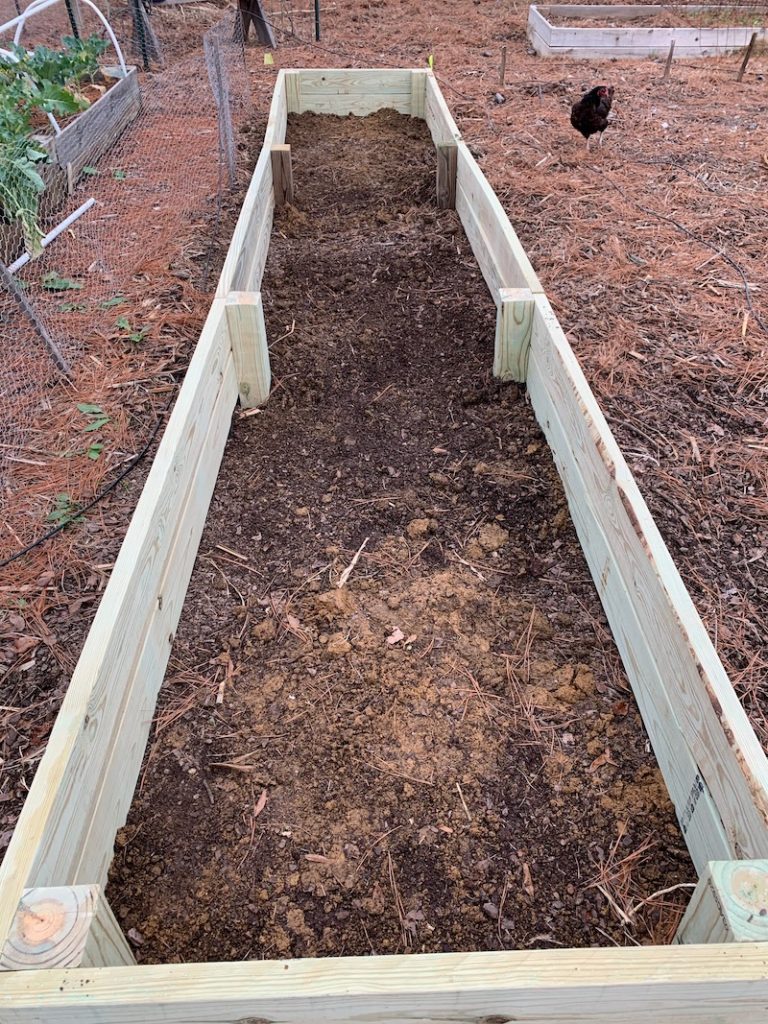
If you don’t have access to soil on hand, as most of us don’t, you probably know that filling those raised beds can be pricey. A good way to do fill your bed on a budget is to put something different on the top than you do on the bottom.
No matter if your bed is super shallow or very tall, your best soil needs to be on the top six inches. This is where plants’ feeder roots tend to be, so save your pricey soil and compost for the top. So, what do you fill the rest of the space with? There are so many options.
I have used sticks, pinecones, logs, woodchips, straw, partially broken down compost, old okra and corn stalks, even weeds! Look at what organic matter you may have on hand, and use what you have. It will all break down in time anyway, contributing to the tilth and fertility of the soil.
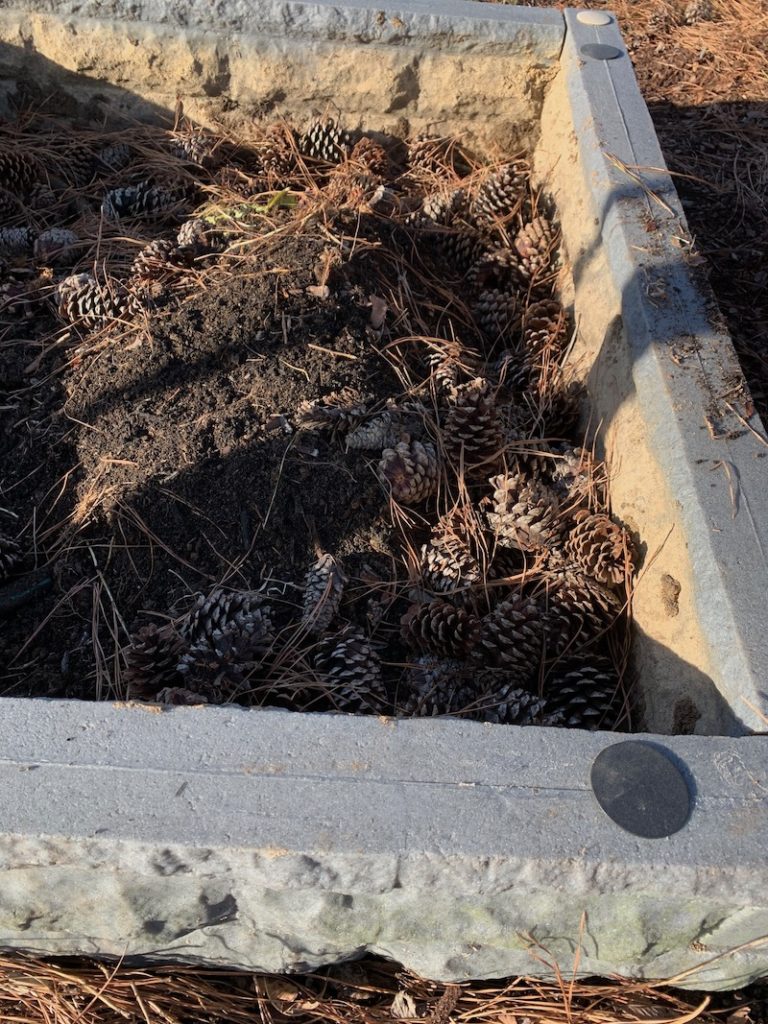
If your bed is very deep (24″ and deeper), you can add any kind of bulky, organic material such as leaves, shredded paper, broken down boxes, etc. All of these materials are going to break down eventually.
Will the organic matter settle?
Yes. As these items break down, your soil will settle and the level will drop. Keep in mind that the bulkier items on the bottom will eventually leave you more top space to fill. But, you can top that with compost and plant your annual plants. It will all just build on itself and you’re going to be so impressed with the long-term results.
But, I do have to caution you. If you’re planting perennials (plants that live year after year), I’d caution you against using too many of the bulk items. As the soil settles in time, it’s very hard to top those off when you’ve got plants growing year-round inside it. Having struggled through this dilemma, I recommend you use a different place to plant the perennial plants or use fewer bulk items.
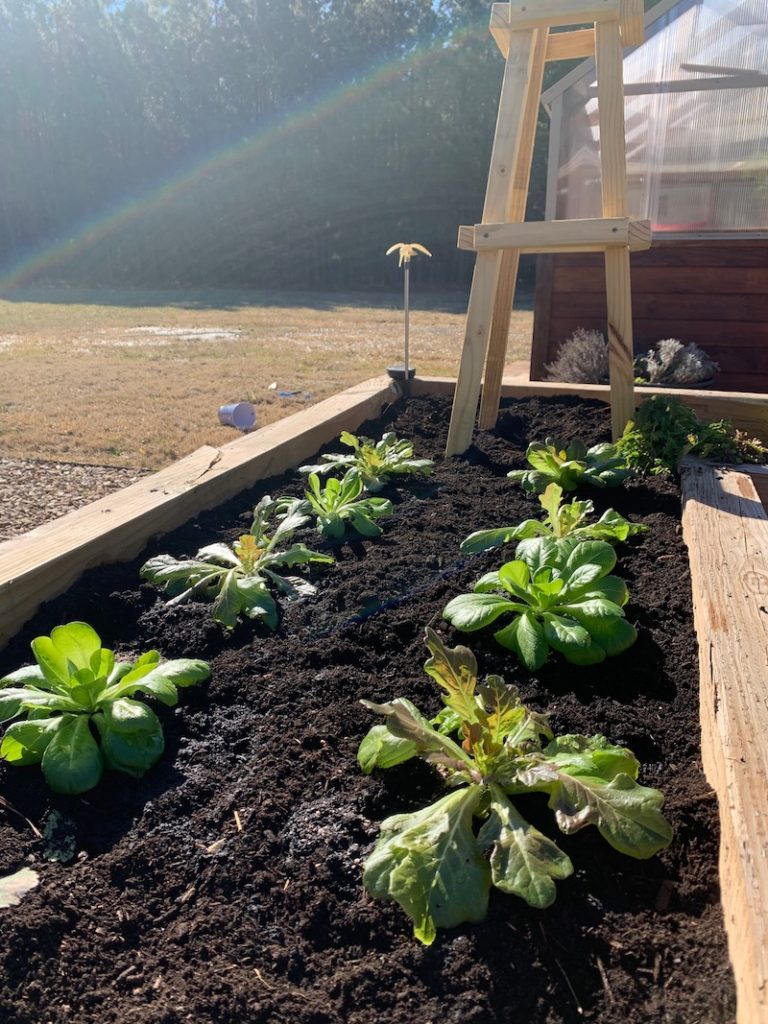
One final caution, that most gardeners understand these days. Avoid using rocks to fill the bottom of your raised bed. Rocks themselves aren’t a problem but if you line your beds with rocks, the bed will not have proper drainage. A water table will form on top of the rocks. With a deep bed, that’s not going to be as much of an issue as with a shallow bed. Still, it’s best to just avoid using rocks at the bottom of a raised bed to add bulk.
Hopefully, you’ve learned a new way to fill or line the bottom of your new raised beds. But if you’re still trying to decide what to fill the raised beds with, grab the free download, Raised Bed Soil Options Guide for Any Budget below.

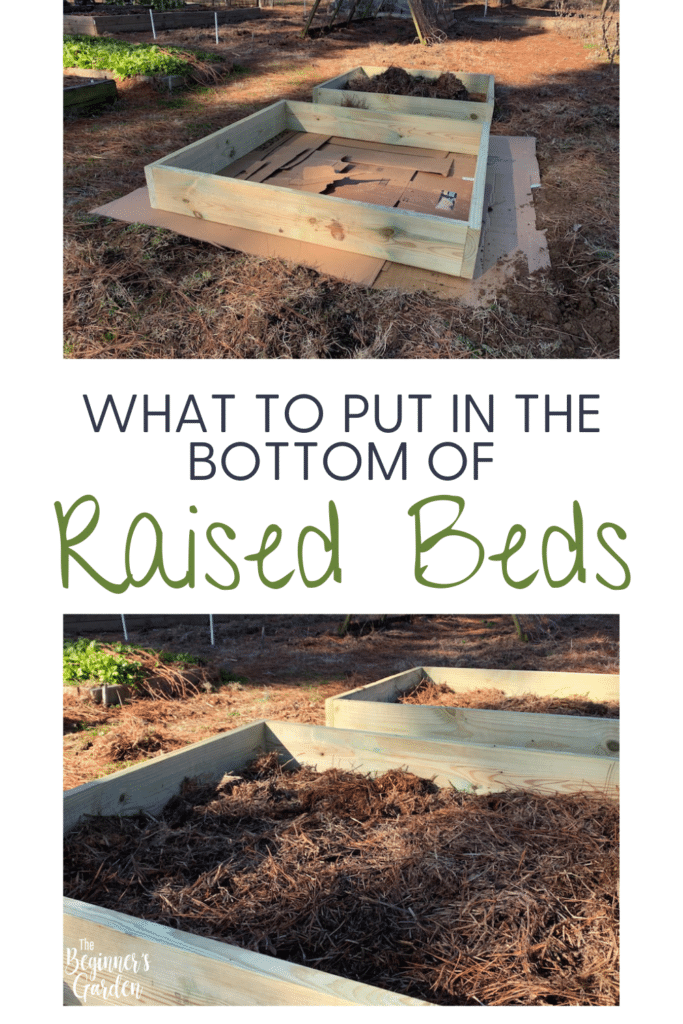
Your beds look great. We are moving from our current farm to a new one across town. I just put new resident beds in last year as my 7 year beds were starting to deteriorate. I hadn’t planned on starting over just a year later but we’re excited about the new adventure. My question is what method did you use to on your garden area around your beds to keep the grass/weeds down under your wood chip.
In the past I haven’t used anything; we just use a weed eater to “mow” the grass. I started using my husband’s saw dust shavings in between, and they seem to work well to cut down weeds. This year I plan on using greenhouse-grade landscape fabric around some beds to see if that cuts down on the weeds and the weed eating. It’s all a testing process!
I have an 18 inch deep bed. Can I fill the first 9 inches with straw alone then my dirt on the top 9 inches
Yes, I would have no problem doing that.
We just built two 4′ x 8′ beds and are 12 in. deep. We laid down landscaping fabric. We are planting a couple of tomato and bell pepper plants for now. We may do some onions possibly potatoes, and maybe some Zucchini and lettuce. My main question is when planting these into the beds should we cut a slit into the fabric for the roots or will the manage just fine?
I’ve seen gardeners grow those crops in 12″ depth with beds completely lined with landscaping fabric. The roots will spread out in whatever medium it is given. I prefer to leave the bottom open so the roots can have space to spread down if they want and also to introduce native soil and its microbes to the bed. But that’s a personal preference.
I am building deep raised beds on top of gravel (between the back of my garage and my driveway). What do you recommend to line the beds? If landscape fabric, what type? Any advice on making my first raised beds successful is greatly appreciated!
I’m not sure I’d line the bottoms with anything. I’d line the sides with landscape fabric just to prevent the soil from seeping out between the boards, and letting the fabric go into the corner between the wall and the ground so the soil doesn’t seep out the bottom sides, either. I used a basic kind I got at Lowe’s. But otherwise, I don’t see a need to line the bottom unless you want to.
I suggest straw which around here is 3 bucks a bale. Takes up space and ad sand for circulatio cocerns and am trying this pine needles that has been in the woods decaying last 10 years
I have literally just spent the last hour reading through the various topics and questions you answer on your site! You have provided the most thorough, straightforward and helpful almanac of advice I’ve found to get my raised bed garden started in my front yard! Thanks 🙂
Thank you so much for sharing, Jess! I’m so glad you’ve found the information helpful! Best of luck. 🙂
Do u think pine needles would be good to put on the bottom of a raised bed that is 12 inches deep then put top soil on top of the pine needles. If so how many inches of top soil? I have really enjoyed reading your posts and listening to your podcasts. Thanks in advance.
Yes, I have used pine needles before and that’s a great option! I’d recommend at least 6″ of soil, although 8″ would be better. Be prepared to “top off” the beds with more compost as the soil and pine needles settle.
Do you think it would hurt to put sawdust from a newly cut acorn tree in the bottom of my raised bed. The bed it 10″ high. So as long as I can top the bed with 6 inches of good soil and compost. What is your thought on this.
Thanks
Cathy
Hmm… I’m not sure about that. Sawdust will rob nitrogen quickly and I fear that any roots that do make it down that far may suffer. I just don’t know for sure, though, since I haven’t used it in that way. I prefer to use sawdust on pathways because almost nothing grows in it.
I am building 2’ raised bed do you think I could scatter some old bricks on the bottom to help with soil cost. They would not fully cover the bottom of the beds.
I honestly don’t know. I’d recommend you research what’s in the bricks to make sure they are safe, but my gut tells me they are (since many people use bricks on the outside of their raised beds). I just don’t want to tell you one way or the other, having not researched or used it myself.
How many layers of fabric liner should you use in a raised bed? Also should you go all the way up the sides or just part way?
I don’t line the bottom of my raised beds with fabric. If the beds are tall with many boards stacked on top, I line the sides to prevent the soil from seeping out between the cracks. And this year with new beds I’m putting fabric under the sides of beds and into the bed space by about 6″. I prefer not to line the entire bottom of my raised bed with fabric, but I’ll line it instead with cardboard.
I have learned a lot from reading these questions and your answers. I have 4 new raised beds that are open at the bottom and 17 inches tall. I imagine that weed fabric is not necessary and plan to use cardboard. Although some people in my gardening group are adamant about using the weed barrier fabric. I know I have good native soil since my plants do best in the in ground beds so i want to keep the connection of these new beds to the Earth. Does this sound like a good plan that can prevent a bunch of weeds from growing thru? Gardening is a lot of work already and if i can minimize weeds…heck, why not? I just wonder if cardboard will be sufficient assuming i only fill the beds about 15 inches. Thanks!
In my experience, the only weeds that are problem coming up from the bottom is Bermuda Grass, and it will grow though landscape fabric or cardboard eventually anyway. Of course, I don’t know what your weeds are, but aside from Bermuda Grass, I’ve never had issues with weeds coming from the bottom; they appear from the top as birds fly by or seeds get blown in, which obviously you can’t prevent entirely.
Hello Jill! This was such great info. Learned a lot of things I didn’t know about raised beds. I recently built raised beds for the first time, I used hardware cloth because we have gophers here.. Then I put branches, sticks, pinecones, and then put cardboard on top of that.. Then plan to top it with topsoil and compost. Do you think this is good? I’m starting to wonder if I should have done the cardboard first and then the organic matter (sticks/branches/pinecones) on top of them..
In the big scheme of things, I don’t think it’ll hurt. It’ll all break down eventually. If you plant deep-rooted plants, they may stay shallow if they can’t penetrate the cardboard (before it breaks down), and if that happens, just keep an eye on your watering to make sure they don’t dry out.
I live in Florida so have put together metal raised beds. We have moles, can I place the beds directly on top of the hardware cloth so there’s over lap? I see no way to staple or nail the HW cloth to the frame without compromising the bed. Worried the bed will slide around on the cloth too or will the dirt make it heavy enough?
That’s a good question and one I could only guess to answer since I haven’t added hardware cloth to my metal raised beds. But I would probably try to cut the hardware cloth to fit precisely within the raised bed. I do think if you just rested the bed on the hardware cloth, the weight of it would keep it anchored, especially as the dirt forms around the whole structure. But again, I’m just guessing.
Hi Jill! My husband just built some new raised beds for me and I’m in the middle of filling them. They are about 8″ tall. Do you think this is tall enough for tomatoes? And also I planned to just line with cardboard but the soil underneath is pretty dense with grass. Should I do anything special to the soil underneath or just put everything on top?
Thank you!
Kelley
The 8″ beds will work for tomatoes if the beds are open to the ground underneath. Cardboard takes several months to break down, though. I’d recommend newspapers (4-5 layers) instead if you’re getting ready to plant soon. You could scrape off the grass, especially if it’s an invasive grass like Bermuda. Otherwise, the newspaper should smother the grass well enough along with the soil on top.
Jill, I’ve really been enjoying your posts & the wealth of information you provide. I’m planning to supplement an above ground raised bed with 5-gal container gardens. Do the same principles apply to these as for raised beds for filling with soil? Do I need to drill holes in the bottom to allow for drainage?
Thanks again!
Hi Bonnie! No, container gardening is a completely different thing. You’ll definitely want to drill holes in the bottom and then use a potting mix that’s light and more suited for containers. I generally use potting mix with compost — the compost no more than 30-50% depending on how dense the compost is. And you’ll also have to plan to fertilize during the season since all the watering will leach nutrients faster.
My raised beds are made from old wood pallets and are up off the ground as I have back and knee issues. I was wondering what is a good (and cheap) method for lining them. I was told by gardening friends to use the barrier fabric, but the stuff is rather expensive. I also need help with selecting the correct soil. My beds are really deep, so I’m worried that it will cost a ton to fill them. Any suggestions?
If the pallets were heat treated (and not chemical treated), it may not be necessary to line the beds at all. I’m not familiar with bed lining, though I’ve heard food-grade plastic liner being an option. This post should answer your other question: https://journeywithjill.net/gardening/2022/03/18/how-to-fill-a-new-raised-bed-with-quality-ingredients-and-save-money-by-using-what-you-have/
I am putting my hardware cloth about 10” deep. Will this be deep enough for most veggies since the 1/2” grid allows roots to grow through it?
Yes.
This will be the first raised bed I’ve used for vegetables. It will be between 15″-17″ deep. I need to use the hardware cloth because we have a mole problem. And, I was going to cover that with cardboard and then some of the items you recommended – sticks, pinecones, grass, etc and then 6″-8″ of soil. Will that be enough for tomatoes to grow in my raised bed?
Thank you.
Yes, it sounds like a great plan.
My husband is making our raised veggie beds out of old tin from a barn..is that something We should reconsider or would it be okay?
I’m not aware of problems with that, but you may want to double check me. I’ve heard of gardens being used with those kinds of materials.
Really enjoy your posts.I have a huge weed problem and can i use them as a filler in my 10 inch raised garden?
I do that with weeds that aren’t invasive but I put them on the bottom just to be sure any seeds don’t get access to light.
We have a ton of slugs at our home in Alaska! Should I line the bottom of my raised bed? Im also unsure if I should use my natural soil to fill the bed?
Thanks!
I can’t imagine that lining the bottom would make a difference with slugs, but I don’t deal with slugs much. Here are some articles I’ve written on raised bed soil: https://journeywithjill.net/?s=raised+bed+soil
We just replaced our garage doors. I made two planters out of our old garage door panels (steel insulated). The planters are 8 feet x 28 inches. Do you think that is safe? My daughter has horses. She has a lot of horse manure mixed with shavings. Can I use that if it is over a year old as part of the fill? It does not smell.
I don’t know what the garage doors are made from or were treated with, so you might need to research that. Or you can go ahead and line the sides with a food-grade plastic to be safe. Horse manure is often tainted with herbicide if the horses ate hay that was sprayed. Most hay is sprayed with broad-leaf herbicide. I would ask first and be sure before you use it because if you put tainted manure in your soil, it’s a nightmare.
Hello! I have 24” high raised beds (stock tank styles are solid on the bottom, and others are open on the bottom all to the dirt ground) Because they are so tall, I was going to put cardboard on the bottom, then add cut pine logs and branches to the bottom, then layer with other materials until I get to the top 12” ( the top 12” i was going to use my good soil)
Will it be okay to use the pine logs? They are freshly cut. I have read that pine is not good to use BUT I have also read that it doesn’t matter on deeper beds, that they wont be affected because of the depth. Thank you!
Hello. I’m building a raised bed with 3ft roof panel sides. My now 12″ raised bed get heavy spider roots from near by maples. Should I use a liner of some sort or will the roots not travel up that far.
I’m sorry, Ken, I don’t have experience with that. I have pine trees that encroach on my raised beds. I don’t line them; I just deal with them. The only problem I’ve noticed is that they will take the water you give to the bed. So more water is necessary. But I’m not sure about maples.
Yes. I have had trees root in the past ruin my beds, and now use heavy duty fabric in the bottom. Tree roots search for water and nutrients. Unless your trees are more than 50 yards away you need much more than cardboard.
Thank you for the post, readings, and responses. I have learned a great deal. I am transitioning from 2 years with above ground raised beds (18 in too shallow) to raised ground beds. I always had good yield but had to water by hand a great deal and felt all of the vegetables would have achieved more w a deeper root base. Thanks for your tips and encouragement ! Happy planting !
We have the same question as Ken. We had to dismantle all 3 of our raised beds because they were literally filling up with tree roots. We are building new ones and my husband wants to place them on concrete pads to keep this from happening again. Not sure what else we can do.
I think that’s a good idea. Just build them tall enough to have enough space for deeper rooted plants (I’d say 30″).
You’ve been so helpful! My husband is building a raised garden bed from some 3×3 fiberglass boxes he found. He has drilled holes in the bottom, then filled halfway with large gravel. They are about 2 foot tall. He says he’s gonna lay the heavy duty weed cloth on top of the gravel, then fill the rest with soil (about 1 foot). Is this gonna work??? He doesn’t know anything about gardening and is trying to surprise me! Should I stop him now before they are all filled with rock???? He’s already done 5 of them and will fill the other 15 this weekend! Nervously awaiting your reply! {{{ THANK YOU! }}}
Hi Tiffany, I haven’t done this myself, but a local nursery does something similar. You can watch this video where I interviewed her about her process (and it is demonstrate). I don’t know answers to most questions about it but maybe it will give you a place to start! https://youtu.be/dlxsapM_1ec
Thanks for sharing this! How did your beds do? When you put weeds in the bottom, did you have problem of them growing back up?
No, the annual weeds at the bottom didn’t come back up. Bermudagrass has made an appearance in both beds but nothing major…yet. 🙂 They have gone through two full seasons though.
This was really helpful thank you! I have built a raised veggie garden with eight 4′ x 8′ x 18″ high beds, and this this helped me decide not to line the bottom of the beds. Thank you for your help!
Lawrence
Thank you for this article. I am in “no liner” camp. I lined a few flower beds and still had weeds. Weed seeds are often airborne, so regardless, there will alway be weeds to pull. I hate landscape fabric. Not only does it keep worms out it also destroys the underlying soil. If you’ve ever pulled up old landscaping fabric, you know what I mean. Cardboard is ok if you want to line your beds but be sure it is cardboard that hasn’t been sprayed with pesticides or glued together with glue that has chemicals in it. Paper grocery bags with no print is a nice option. Keep in mind, when the cardboard/paper bag breaks down, weeds and grass can creep in from the bottom. If your problem is rodents and you have deep beds, that makes sense. I’ve recently started putting sticks, small logs, etc. on the bottom of deep beds. I love that idea.
We have a greenhouse that has a gravel base. What would you recommend for the base of the raised garden boxes that will be sitting on the gravel?
It depends on how tall they are. If they are over, say 15″, I would just lay landscape fabric to keep the soil inside the bed. If it is 15″ or less, I personally rake away the gravel and place it on the ground because I like my crops (especially the deep-rooted ones) to be able to access the soil beneath. But this is a personal preference. If you’re not planting deep-rooted plants, you could use landscape fabric for more shallow beds.
Hi Jill, nice website, very informative 🙂
I have a couple of raised garden “boxes” with the bottom elevated off the ground. They are made out of cedar. Have drainage holes cut into the bottom in a few spots. What do you recommend I use to line the box, so I don’t lose soil from the bottom? Regular landscape fabric? I know you’re not a fan of this when boxes sit on the ground, but this is totally raised. Thanks.
Yes, landscape fabric works. I use it to keep soil from spilling out the sides of my taller wooden raised beds for that purpose.